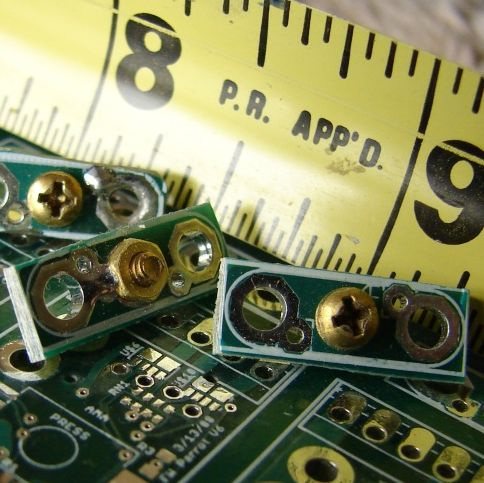- Joined
- Nov 8, 2015
- Messages
- 1,401
- Reaction score
- 78
As my L2 Certification launch approaches, I find myself forward thinking about an eventual L3 Certification. I think my desire to achieve the L1/L2 as well as everyones awesome support on the board have greatly attributed to my success so far. Now I believe there are things I must learn to properly prepare and make informed decisions moving forward. To date Ive learned to use Paper tubes; fiber glass tubes; how to prepare them. RocketPoxy over BS epoxy; glued on motor retainers; Ebays with pull pins and rotary switches and things of this nature. While at the time these appeared difficult; all appear rather normal now. To that end - Ive never done actual glassing of paper tubes or composite fins. I have no idea how screw switches work; unsure of how to mount/use shear plates; no radio/gps devices; no experience in making hatch covers, nor why foam in fin cans, etc. Also no experience in the use of chute bags. Ive seen numerous conversations around many of these subjects on the board, and I know all these things would greatly benefit (are necessary) growth and knowledge toward the L3. So after I complete my L2 event; lord willing this weekend; what kind of suggestions would you all recommend as a next project moving me closer to that knowledge level that would help in pursuit of a successful L3 design (Be it kit or scratch)?
Im not sure I can incorporate all of these in a single project; but is there a kit that might require a lot of these type skills that I might focus on next? Or is it time to scratch build and work through the design now? I have rocksim; so the later isnt an issue other that actually getting parts and understanding why certain parts should be used to withstand the forces required. I tried to download aerofinsim and sent an email requesting access; but to no avail. I thought that would be a good tool to use. I dont have a shop or garage, which always makes a build a challenge, but it wont stop me necessarily. I welcome all comments and opinions, and thanks in advance.
Im not sure I can incorporate all of these in a single project; but is there a kit that might require a lot of these type skills that I might focus on next? Or is it time to scratch build and work through the design now? I have rocksim; so the later isnt an issue other that actually getting parts and understanding why certain parts should be used to withstand the forces required. I tried to download aerofinsim and sent an email requesting access; but to no avail. I thought that would be a good tool to use. I dont have a shop or garage, which always makes a build a challenge, but it wont stop me necessarily. I welcome all comments and opinions, and thanks in advance.






